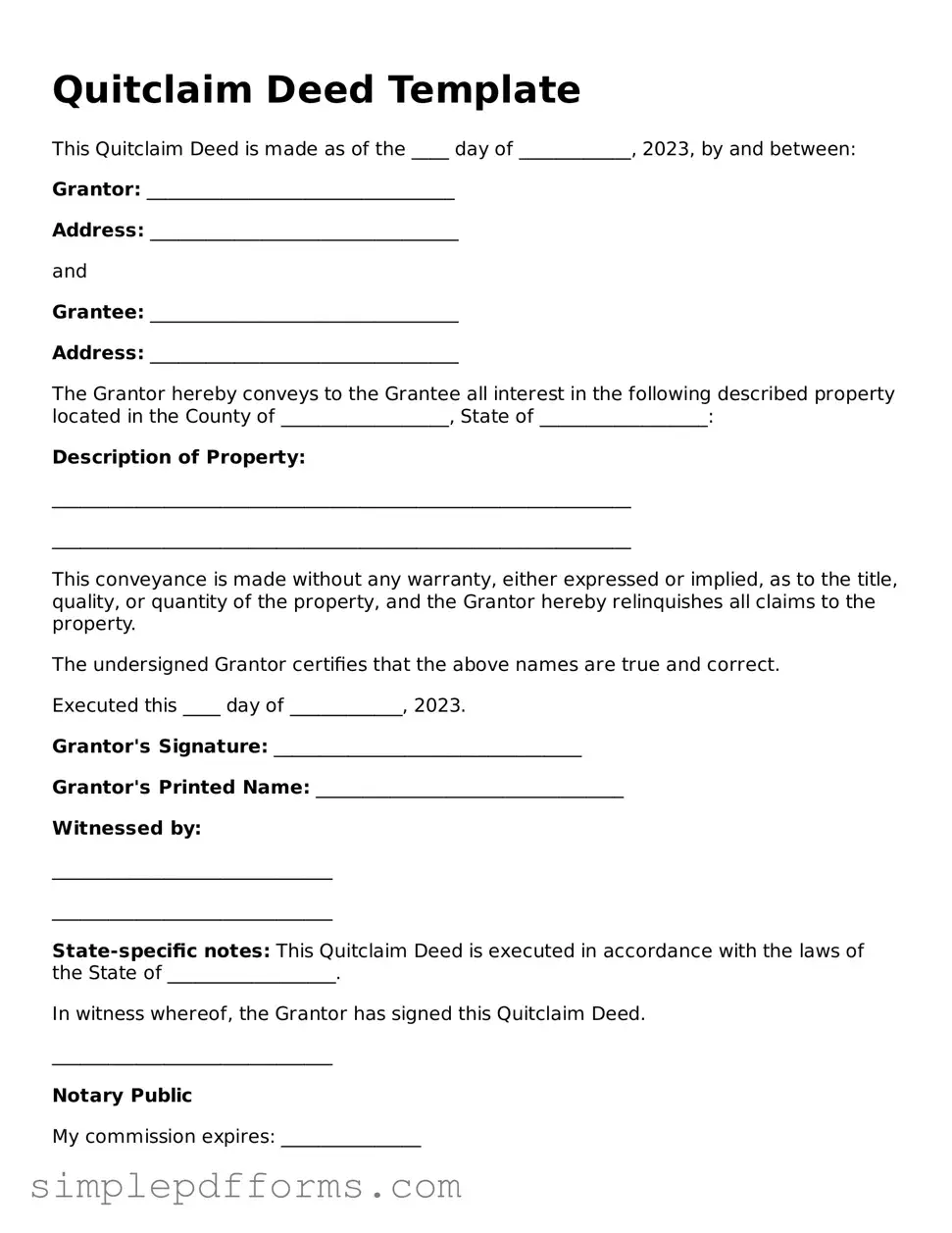Quitclaim Deed Template
This Quitclaim Deed is made as of the ____ day of ____________, 2023, by and between:
Grantor: _________________________________
Address: _________________________________
and
Grantee: _________________________________
Address: _________________________________
The Grantor hereby conveys to the Grantee all interest in the following described property located in the County of __________________, State of __________________:
Description of Property:
______________________________________________________________
______________________________________________________________
This conveyance is made without any warranty, either expressed or implied, as to the title, quality, or quantity of the property, and the Grantor hereby relinquishes all claims to the property.
The undersigned Grantor certifies that the above names are true and correct.
Executed this ____ day of ____________, 2023.
Grantor's Signature: _________________________________
Grantor's Printed Name: _________________________________
Witnessed by:
______________________________
______________________________
State-specific notes: This Quitclaim Deed is executed in accordance with the laws of the State of __________________.
In witness whereof, the Grantor has signed this Quitclaim Deed.
______________________________
Notary Public
My commission expires: _______________
